Recently, I was in Idaho for a press event hosted by Patagonia. The purpose was to go into deep detail about their 2016 line of waders. As a newly minted Patagonia ambassador, I was along to talk about Patagonia's approach to tenkara.
An added benefit was having Yvon Chouinard, Patagonia's owner and hardcore tenkara proponent, join us for the three days. Chouinard and two colleagues, Craig Mathews and Mauro Mazzo have written a book, entitled Simple Fly Fishing, on simple techniques for fly-fishing and tenkara and this was a chance to see some of Chouinard’s techniques in practice.
Chouinard and Patagonia are committed to using tenkara and the simple techniques it requires to get more people into fly-fishing and as a side benefit, become stewards of the natural world.
Tenkara, for me, has always shone as a dry fly technique, so I was intrigued when Chouinard talked about using tenkara to fish two soft hackles, downstream. He said it was his preferred way of teaching people how to use a tenkara set up because it was so effective.
Most of the people who participated in the event had never fished with a tenkara rod and some had never fly-fished at all. To his credit, Chouinard took these folks under his wing and using his technique, quickly had them catching fish after fish.
This is a downstream fishing technique that may fly in the face of some long held fly-fishing conventions. I saw it work with others time and time again, used it myself and now I’m a believer. The key is keeping the line tight so you can connect with the fly and the fish.
Line length
If you are fishing a 10-foot, six-inch or 11-foot rod use 20 feet of floating line line. 20 feet may seem long to those of us in the east but on the western rivers it was just the ticket. I have tried the technique on my local spring creeks and shortened the line to 14 feet.
A seven-foot, six-inch leader is attached to the line with a perfection or double surgeon's knot. I adapted this for our local water by cutting 2 feet off the butt end of the leader, making it 5 feet, 6 inches. I know this seems like a large knot and it would be for dry flies, but the goal is to keep tension on the line and the drag from the knot helps.
Floating lines are becoming more common and Patagonia offers 40 feet of 0.027-inch Cortland floating line made of a small-diameter, hard mono core and a supple PVC coating. Each package includes a seven-foot, six-inch, 3x leader. They retail for $24.95.
The dropper set up
A word of caution here; two fly rigs, if not cast well, can become a tangle very quickly, so casting fundamentals are key. The most fundamental of fundamentals is keep slack out of the system.
We were using soft hackles and I heartily recommend them. The point fly is tied to the end of the tippet and will be the larger, bushier or heavier of the two flies. The dropper will be smaller or lighter and tied in above the point fly. Two flies give the fish two food choices, help straighten the line as you fish and most importantly, the flies have two different actions in the water.
The easiest way to tie on the dropper was with a dropper loop, a separate piece of tippet attached to the leader above the point fly. Here is how you do it. Tie in a length of tippet for the point fly, say 3 feet. Now take six to nine inches of the same size tippet and tie a perfection loop or double surgeons knot on one end.
Hitch the section of tippet to the leader by taking the tag end through the loop and tightening it above the knot to the last section of tippet. Tie your fly to the tag end and you are set to go.
Chouinard shared a tip with me about this; use regular nylon tippet for the point fly, but stiffer fluorocarbon for the dropper. The stiffer fluoro helps keep the dropper away from the main leader/tippet reducing tangles.
Casting and fishing
Make a quartering (45-degree) downstream cast. As soon as the flies are in the water make an upstream mend. Yes, upstream. Upstream mends will get the slack out and not swing those soft hackles too fast, they are nymph imitations after all, not streamers. The two flies and the bulky knots will help keep the line tight so you can feel any hits. The key is to maintain direct control of the flies.
When the flies are downstream you can make subtle twitches to the two flies by putting your thumb on top of the rod and squeezing the cork with your fingers. You don’t want to make big moves, just a small twitch to make the soft hackle pulse. Time and again I saw fish hit at the end of the twitch, their predator instinct hard at work.
Dries and terrestrials
Those of you who like fishing dries like I do will also benefit from this technique. Substitute a caddis, stimulator or terrestrial for the dropper and with a bit of practice you will have that dropper hopping rather than skittering or swimming. In one run out west, using this hopping caddis technique, I brought a dozen rainbows to hand in less than half an hour.
The takeaway
While I’m still a devout member of the church of the dead drift, I saw firsthand how this simple technique had rank beginners catch fish in short order. It opened my eyes to another way of introducing new people to tenkara and helping them unlock the door to more enjoyable time on the water.

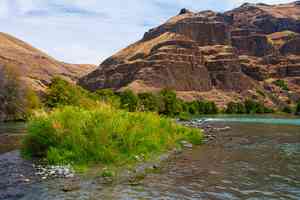

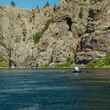
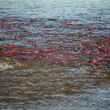
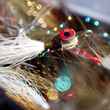

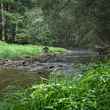
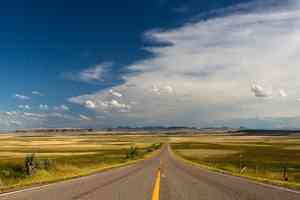


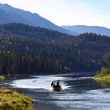
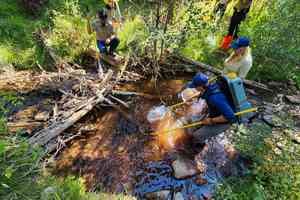


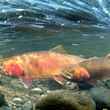


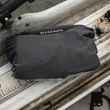
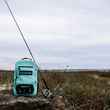





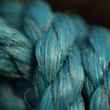
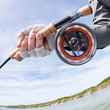
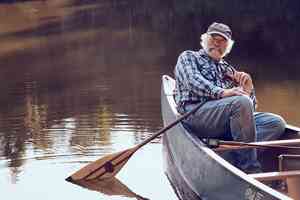


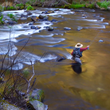
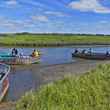
Comments
Adam replied on Permalink
Tom, interesting read. Great to hear about what's going on inside patagonia, and that they're committed to Tenkara.
The one thing I just can't wrap my head around is the recommendation of 20 feet of line, and the use of an additional long leader. This kind of destroys the entire purpose of tenkara fishing. Sure, you can fish a long line and still catch fish on a tenkara rod... that part most of us "get," and many of us have seen it in real life. This isn't about being a purist, my comment relates to the reality of not being able to keep line off the water UNLESS you fish only downstream...
I think it would be silly to teach people only to fish downstream. Its one thing if you want to get some noobs into some fish and you're a guide or running an event... but for the rest of the community, and for the good of those getting into Tenkara in general, we owe it to the public to teach Tenkara methods correctly, no?
This is where I let my disappointment show... how can someone (Patagonia) be so irresponsible as to teach "Tenkara" when really what they're doing is teaching a method of Italian Valsesiana fishing?? I like Valsesiana too, but its not Tenkara. The rods are different, the lines are different, and the flies and rigging is different. I visited Italy and learned all about it, so its more obvious to me now than ever before.
I just cannot get beyond the idea that anybody would actually recommend this kind of rod/line setup for the public at large. Fishing bigger water? Use a longer rod. If the 4.5 meter rod and 5 meters of line including tippet won't get you to where you want to fish, why even bother with Tenkara? (Yes, That's a real question, not a rhetorical one.)
It just makes no sense to me, especially when we have fixed line rods long enough to do this without having to fish a "long line" method... and because we also have reels.
I'm curious about how you feel about this yourself, I guess you don't mind that the definitions and uses of the terms are all confused and mixed up?? I kind of feel that its important for experienced Tenkara anglers to explain the differences between things like Tenkara, Keiryu, Honryu, and beyond...
What Chouinard should be doing is adopting "Honryu" into his vocabulary if he's fishing big waters and long lines... because I'd rather see people learn Tenkara properly, wouldn't you?
Al Alborn replied on Permalink
You really have to read Chouinard's book, Simple Fly Fishing, to understand what Tom is talking about.
I'm on my third copy (having given the first two away).
Simple Fly Fishing isn't about Tenkara. It's about catching fish. Chouinard discusses a variety of techniques, discusses both fixed line fly fishing (which some call Tenkara), and traditional Western fly fishing (that "reel" thing). He freely mixes styles and talks about how to use fixed line techniques on Western rods, and visa versa. He also covers styles from around the world.
I like the fact that Chouinard dismisses orthodoxy, complicated taxonomies, or things which confuse folks interested in fly fishing. At the end of the day, it's about a rod, a line, and a fly. After reading Chouinard, I expanded from Sakasa Kebari's to a broader soft hackle choice. I fish flies which look "buggy," and fish the same fly all day (or until I lose it).
I'm a Project Healing Waters Tenkara Guide. My goal is to help Warriors catch fish. Chouinard's book changed my approach to using fixed line rods. Like Tom, I fish a 20 foot line on big water (on my 11.5 rod), and shorter lines on smaller waters (I have all three Patagonia rods). I learned how to fish a 20 foot line in Chouinard's book, and by watching his videos. It's just not that hard to cast on the right rod.
I'm not interested in "proper" Tenkara. I'm interested in helping Warriors catch fish. I suggest Chouinard's book is a great place to start if you want to "reset" how you use a fixed line rod.
I'm still not up to using two flys in a fixed line rod yet Tom. Hope you demonstrate at next year's Fly Fishing & Wine!
There's no wrong answer. Just go fishing!
Al Alborn
troutbumva.com
Adam replied on Permalink
Al, correct, but my comment was not debating what Chouinard does in practice for fishing, I just think its important for them not to sell this as "tenkara."
I'm no tenkara purist, and I respect the "all in one" approach.
But my point is that we cannot call that Tenkara. Tenkara has a definition. One in which I almost never follow when fishing myself.
But I find it important for the development of the sport that we all use the same definitions and terms so that we don't dilute Valsesiana, Tenkara, Keiryu, or Honryu into one term. And if we want to do that, the term already exists - fixed line fishing.
Of course I agree that there's no "right way" to fish. But Tenkara means one thing, Valsesiana another, Keiryu another, etc.
If you're using western fly line, a Valsesiana multi-fly dropper system and a Patagonia rod, you're not Tenkara fishing. You're fishing with a fixed-line system, and having fun, and doing great catching fish. Why a need to call it "simple fly fishing Tenkara fly rod"? Marketing, right?
I'm just not sure I agree with that approach to Tenkara is all I'm saying. To each his own I guess :)
Al Alborn replied on Permalink
Point taken. At the end of the day, it's a rod, a line, and a fly. Someone who finds such a rig hanging on the wall in a log cabin somewhere, takes it to the river, and catches dinner really doesn't care what it is called.
I started as a "purist" when I got my first Tenkara rod years ago. I worried about what things were called, fussed over lines, and wanted to understand the "right way" to fish Tenkara.
As I evolved, watched others (particularly Tom Sadler, an early adaptor of new ideas), my thinking changed. Tenkara is now just a "Cliff note" when discussing the sport.
To me, it's just another way to fish. I try new things, watch what others do, abandon the things which don't work, and adopt the things that do. I an get a Warrior catching fish on the water in fifteen minutes with a fixed line rod. He or she cares little about what things are called.
If exploring Tenkara in its purist form is your passion, that's ok. If it gives you pleasure to so, don't stop. We need people thinking about these things.
I just look for ways to help the Warriors I guide catch fish, and don't really worry about the details...
like I did in my youth.
I recommend Chouinard's book to anyone interested in fly fishing of any flavor. It changed how I approach both Western and fixed line fly fishing, and blurred the lines between them. The rod really doesn't matter that much as long as it catches fish.
Just get outdoors and fish.
Al Alborn
troutbum.com
Chippy replied on Permalink
Adam, I appreciate your devotion to the arts of fixed-line fishing, but I think you may be over-reacting here a bit. You are not the intended audience for his book and methods. Chouinard is simply trying to get people on the water and catching fish, so they will become vested stewards of our waters. When teaching someone who is new to fishing, the first thing, the thing of utmost importance, is getting them on the water and catching fish. Connection comes first. You can explain the correct history and the sub-methods of fishing later.
It is a rare individual who will listen to a lecture about different fishing styles, hit the stream for another lecture, not catch anything because they are fishing a method that requires skill they haven't yet developed, and then go and do it all over again. I am that type of individual, but the majority aren't. The best way to get someone to keep coming back to the water is to get them to catch fish easily. This keeps them coming back for more. Those that stick around will likely dig deeper, but some will just be content fishing three times a year with a 60 dollar cortland outfit. I think that's fine. When taking a newbie fishing, I don't even bother with conventional casting lessons anymore. I take a tenkara rod, tie on a little soft hackle nymph and an indicator, show them a couple casts, and then hand the rod to them. Most of the time, they catch fish. True technique comes later.
This summer, some relatives and I stayed in a cabin near Mr. Rainier that was on a tiny tributary of the Cowlitz. Every evening, I would walk down to the creek with a 12 foot tenkara rod rigged with 10ft of 20lb flouro, 3 feet of 4x tippet and tight-lined a size 12 bead-head fox squirrel nymph. Was I really "tenkara" fishing? Does it really matter? Every night I would catch lots of little coastal cutthroat on that stream. Sometimes I would hand the rod to a relative, and with no instruction, they would then proceed pull a fish out themselves. One asked deeper questions about fly fishing and the different types of trout living in the cascades, Some asked no questions. All of them walked back to the cabin knowing that the spotted creature with the red slash they held in their hands called that stream home. Now when they walk or drive by moving water, they will have a better idea of who lives in there and be more likely to care. That is probably the best outcome I can think of.
Adam replied on Permalink
You've basically just re-stated what Al Alborn said, which I also somewhat agree with... which is that people should fish the way they want. Yes. We agree.
Let me clearly state once again, that my position has nothing to do with advocating for "purist" tenkara. You see that, right?
Moving back to the actual point... that if we are teaching fixed line fishing methods to people, we should be calling it what it is. Its that simple. If its Tenkara, call it Tenkara. If its Valsesiana, call it that. If its Keiryu with bait, call it Keiryu.
I think its important to discuss this with consumers. It doesn't require a lecture. Its actually very simple... each one of these styles has a definition which can be explained in just a few seconds. It is irresponsible not to do so, would you not agree?
Did I do a better job of explaining the point here? It is not to say what is a right and wrong way to fish. That is what you are discussing, but not something I'm making any points about. My point is about marketing... and the misappropriation of a term.
Patagonia has just taken Tenkara as a word and slapped it onto their methods and their kit, which is not a Tenkara setup. I, for one, don't think the word belongs there. That doesn't mean the rods won't work, they will. They are nice rods. That doesn't mean that people need to fish a certain way, they can fish how they want. They will catch fish either way, for sure.
How does the old saying go? Call a spade a spade... that's the point I'd like to contribute here. I think we all need to be aware and call a spade a spade. We can do this without judging anyone's style or methods at all. Facts. They exist.
Brian Larson replied on Permalink
I find it interesting that the main discusion hs been is this Tenkara when the first statement in the article I find questionable is that it (tenkara) is a dry fly technique. Tenkara flies are wet flies with a slightly different style than a typical English soft hackle. This is the only article I have ever read that associated Tenkara with dry flies. While this method works it would have been nice if it also commented on fishing soft hackles upstream as they originally were with some sort of green wood stick and flies in England or one of the many other places it was done. I would also point out that using different words of different languages does not make what you are doing different. It is a bit like saying shrimp scampy ( shrimp shrimp ).
Adam replied on Permalink
Brian, I couldn't agree more with you and I'm glad you brought that up as well... Tenkara is not traditionally for dry fly fishing... even the flies they tie with "dry fly hackle" ride low in the water and don't stay on top the way our western dries do.
Better drifts from Tenkara would apply both to dry fly fishing and sub-surface fishing, but tenkara's benefits aren't only about utilizing a soft hackle fly.... the actual lack of long lines and the use of a shorter line system allows one to "guide" the fly in the current much better.
There are tons of advantages to Tenkara, fished up or downstream, especially with a short line - and I don't see the benefit in preaching a system to anglers that's all about adapting "western" techniques to an "eastern" system, especially when it comes to using a long line.
I like Patagonia a heck of a lot as a company so I just would prefer to see them get it straight, or change the marketing a little bit, moving away from the word "tenkara," and maybe towards "a fixed line fishing system similar to Tenkara or Valsesiana."
Anonymous replied on Permalink
I like Adam's take on using long-standing terms. Muddling and misusing terms leads to lower quality communication.
'Fixed Line Fishing' could have been used, jazzed up by the Patagonia marketing group, and would have been a better choice.
Thankfully it's just a hobby!
Pages